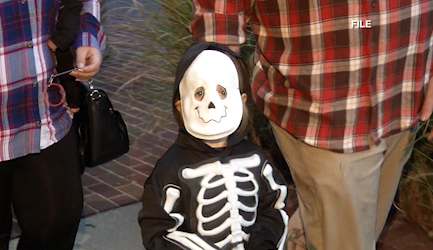Concerns raised over the future of Ward Museum of Wildfowl Art’s location
SALISBURY, Md. – The Ward Foundation’s plans to relocate its Wildfowl Art Museum has some concerned and speaking out, calling on the foundation and Salisbury University to take steps to repair the HVAC system so they can the stay in the location they’ve called home for the past 30 years.
The Ward Foundation announced last month the planned relocation of the museum to a new home in Downtown Salisbury as a result of ongoing mechanical issues following an HVAC failure in July.
The Ward Museum’s galleries have been closed to the public since then, and the prolonged failure of the system created unsafe environmental conditions, which led to the development and spread of surface mold on carvings and other pieces of artwork.
Months of uncertainty went by surrounding the future of the museum and its location following the failure of the HVAC system. As a result, concerns are now mounting among members, donors, and volunteers, including some who’ve dedicated their lives to ensure the art thrives.
Dr. John Juriga, a longtime donor and volunteer of the museum, strongly opposes plans to relocate and questions what role Salisbury University has played in all of this.
“Nothing appears to gel with this ill-conceived plan by SU to move the Ward Museum from where it has resided for the past 30 years,” Dr. Juriga told our Rob Petree. “It appears that SU has a death wish for the Ward Museum.”
The plan to move the museum and its contents to another facility has sparked outrage and a host of questions from donors and volunteers who have worked for decades to help make the museum what it is today.
“If the museum does indeed move to the downtown location, it will take months to prepare that space for public visitation,” Dr. Juriga said. “That would mean a continued lack of a revenue stream. And if the current museum site is vacated, what are the projected plans for the building?”
Dr. Juriga isn’t the only one expressing concerns, Meg Marcarelli, the daughter of the museum’s first curator, Dan Brown, says her late father would be devastated by the move.
“My father is absolutely rolling over in his grave, for so many years he put his heart and soul into that museum,” Marcarelli explained. “He was a friend of the Ward brothers and they actually helped him hone his craft to become a better painter and a better carver, and not only was he doing this for the community, he was doing this to pay homage to them.”
The Ward Foundation and Salisbury University maintains that it would cost millions of dollars to repair the HVAC system; however, Richard Hottel, a retired HVAC professional with over 50 years of experience, inspected the system and says it could be fixed to last up to a decade for a fraction of that cost.
“It actually can operate the way it is,” Hottel said. “There’s certain aspects of it, in the summer when they have to run the boiler, to make sure the humidity stays out, it gets a little expensive so there’s a couple fixes that can improve that greatly on operating costs.”
That was actually part of a proposal that Salisbury University reportedly rejected, according to the museum’s interim director Brittany Andrew.
“We did present that to Salisbury University and they declined that,” Andrew told our Rob Petree. “They are not interested in a stop-gap solution, they’re looking for a more long-term solution.”
While that may be the case, Andrews doesn’t feel Salisbury University is trying to ‘strong-arm’ them out of the facility.
“We’re kind of a headache right now,” Andrews said jokingly. “If they really didn’t want to support us, then they would’ve just chosen to wipe their hands of us.”
Following the HVAC’s failure, steps were taken to protect the art and remove the mold that formed as a result of the issue. Andrews tell us that most of the pieces actually weren’t affected.
“It’s all recoverable,” Andrews explained. “There was no significant damage. A lot of the pieces have what we call surface mold, nothing that is damaging to the paint, it just takes time and delicate hands to clean the artwork. Most of the pieces weren’t affected; however, they are in an infected area so all of the pieces need to be cleaned.”
The Ward Foundation became an affiliated foundation of Salisbury University in 2000. As part of that agreement, the University took ownership of the building, the grounds, the collection, and the debt ($1.6 million). The Ward Foundation and Salisbury University have an annual operating agreement that outlines roles and responsibilities of the two parties.
47 ABC’s Rob Petree reached out to Salisbury University asking if the Ward Foundation had the option to stay in the same location if they found a way to which they issued the following statement:
“The HVAC that serves the galleries has not been repaired or replaced and is not currently working,” the statement read by Jason Rhodes, spokesman for the university. “Estimates to replace, repair the galleries system to the standard required for the continued preservation of the collection are beyond the scope of feasibility for the current building’s continued operation as a museum. It is not an option for the collection, which is owned by SU, to remain in the current building.”
The Ward Foundation is still in negotiations on where the museum will be re-located to. At this time, all that’s been said is that it will be a new location somewhere in Downtown Salisbury. There’s also no official word on what the university plans to do with the building that currently houses the museum.


